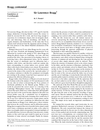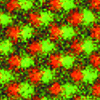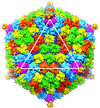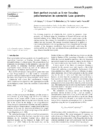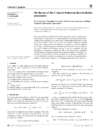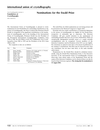issue contents
January 2013 issue

Cover illustration: William Lawrence Bragg at Cambridge (courtesy of the Royal Institution of Great Britain), shown with the indexed diffraction pattern for zinc blende [Proc. Cambridge Philos. Soc. (1913), 17, 43-57], the Cavendish Laboratory and a stamp from 1975 commemorating the 60th anniversary of the award of the Nobel Prize in 1915 to W. H. and W. L. Bragg (copyright Sweden Post Stamps).
Bragg centennial







 access
access


research papers
 access
accessshort communications
international union of crystallography



 journal menu
journal menu












